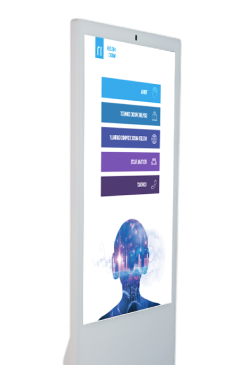

Event Solutions

Our Work

How Interactive Kiosks Are Changing Major Cities
The City of Miami has unveiled the first in a series of interactive kiosks, to help upgrade the pedestrian experience and offer extensive connectivity. The initiative could see up to 150 interactive kiosks installed city-wide. Locations for the kiosks, dubbed (interactive kiosk entertainment), consist of Overtown, downtown, Brickell, Coconut Grove, Little Havana and Allapattah. “As the City of Miami continues to grow into one of the country’s leading technology hubs, we are so happy to add digital kiosks to our rights-of-way to build on our pledge to smart city initiatives and strengthen our role as innovators,” said Francis Suarez, mayor of Miami. The double-sided interactive kiosks have two digital touchscreens and a suite of interactive applications intended to engage and drive discovery and movement. Each interactive kiosk serves as a free wi-fi hotspot and is location-aware, exhibiting information specific to the neighboring area. Multilingual digital content includes comprehensive wayfinding, listings of area businesses, cultural organizations, events, civic resources, job listings, and social services such as homeless housings, addiction recovery programs, and food support. These wayfinding features are designed to turn data into action by helping users navigate to their endpoint, either walking by providing multimodal transportation trip opportunities. The goal is to further activate the pedestrian experience while lessening the digital divide through widespread connectivity and equal access to data. This type of interactive kiosk platform is designed to add value to the towns in which they do business and everyone is excited to serve the residents and guests of Miami. The program is delivered, operated, and maintained at no cost to taxpayers. All aspects of the program are funded by rigorously controlled advertising content that is exhibited when the interactive kiosks are not in use. The Town will receive a constant stream of the revenue produced by media sales and distributes a percentage of those dollars to five key quasi-governmental establishments, proportionate to the number of interactive kiosks installed within their confines. The City says that the interactive kiosks will also frequently exhibit new projects by local and international entertainers in collaboration with some of Miami’s most recognized cultural organizations.